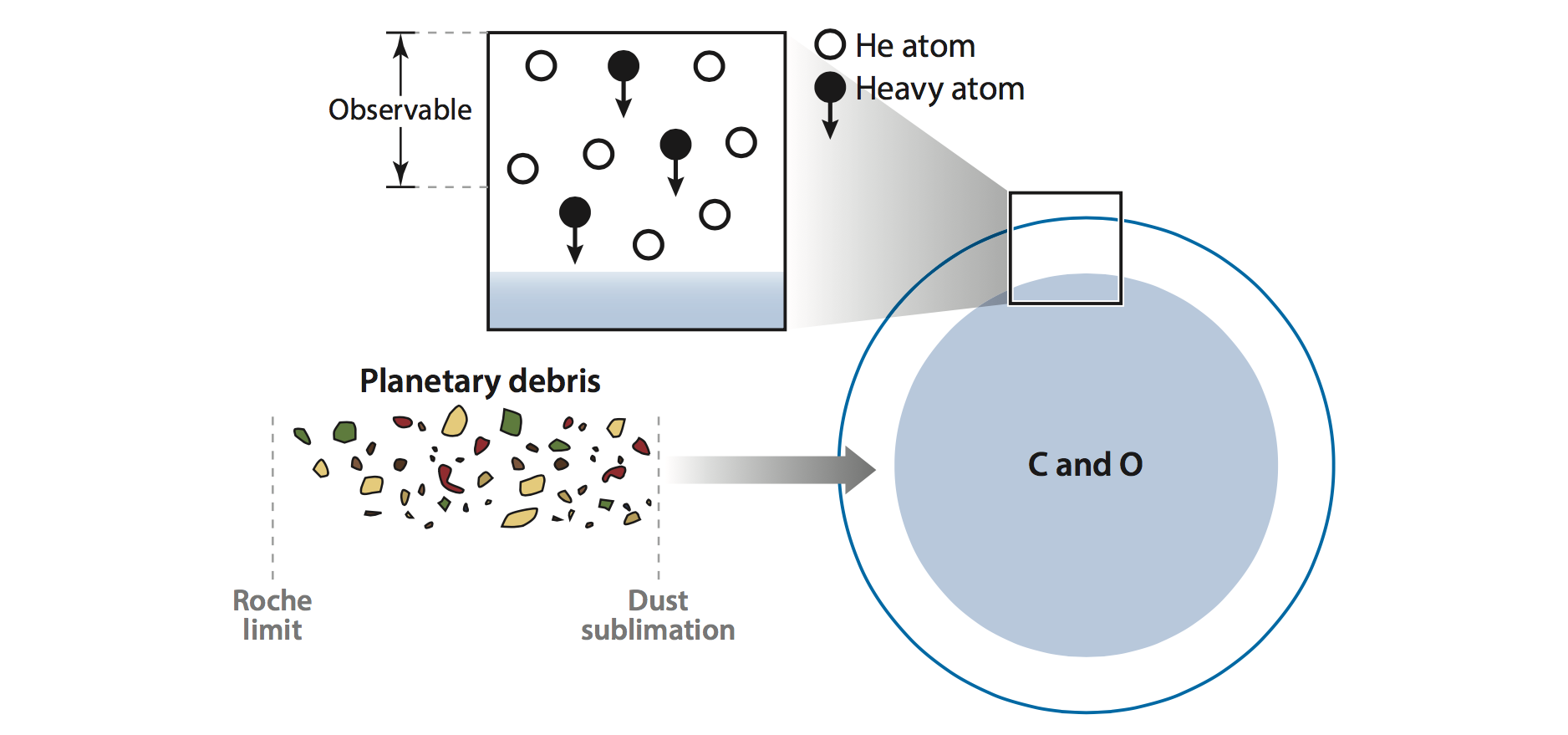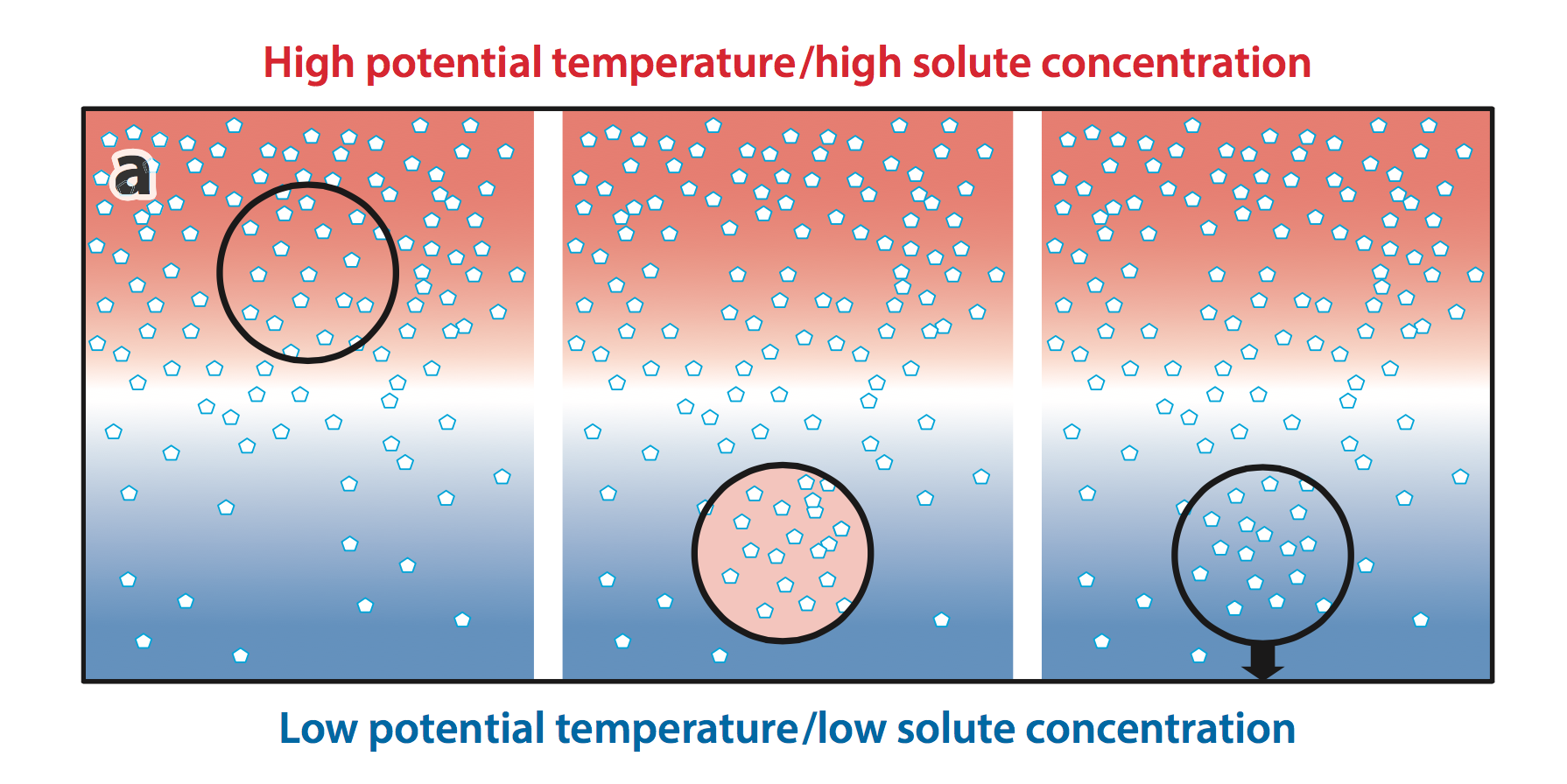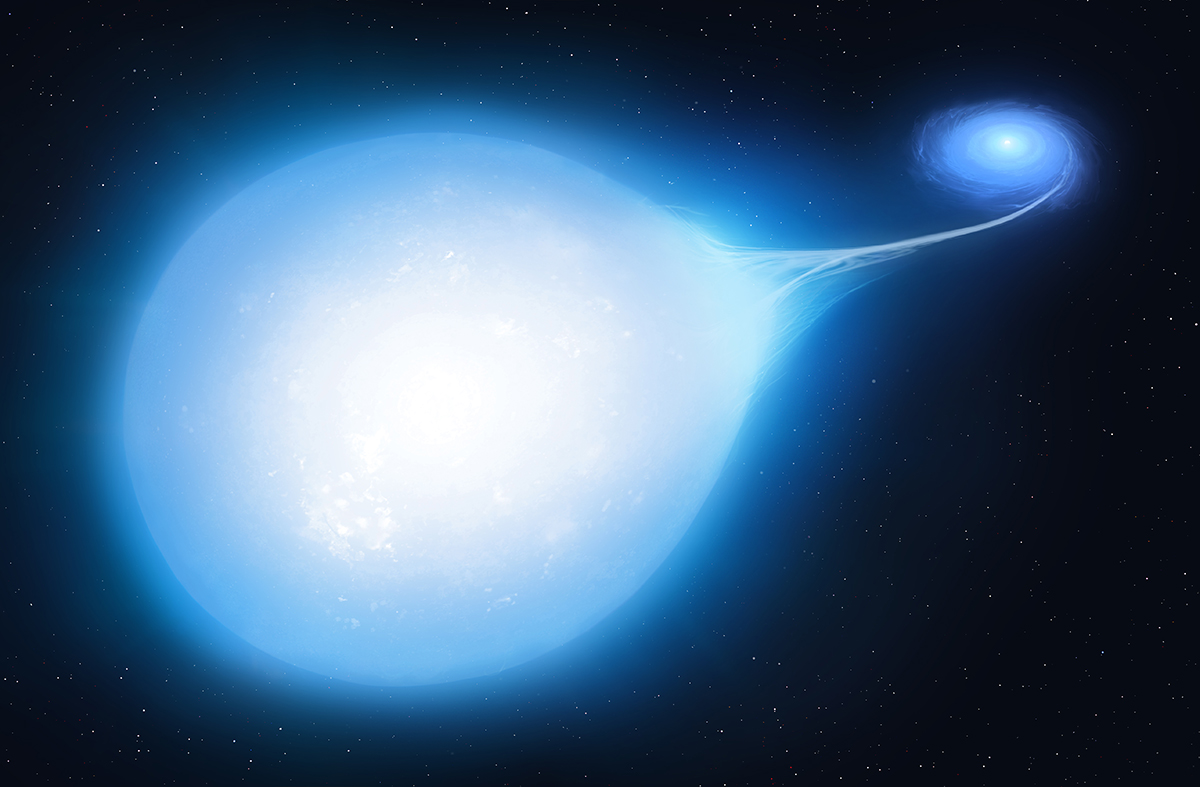Research
All Publications
White Dwarf Cooling
White dwarfs cool off and become less luminous over time. This makes them useful astrophysical clocks on timescales of billions of years. Here’s a rough example of what that looks like:
The color of the white dwarf here corresponds to what the human eye would perceive at the effective temperature in the top right corner of the plot. (Animation generated using Eva Laplace’s TULIPS with colors from ColorPy.)
The structure of the white dwarf cooling sequence (lower left corner of the right panel in the above animation) contains lots of information about the physics of cooling white dwarfs, including crystallization of their fully-ionzed plasma interiors, which releases latent heat and rearranges their interior composition by separating into different mixtures across the boundary between liquid and solid phases. Here’s a zoomed-in version of the same animation showing more of the structure in the white dwarf cooling sequence:
Here are a some publications where I have contributed to and used computational methods studying the physics of white dwarf cooling:
- Carbon-Oxygen Phase Separation in Modules for Experiments in Stellar Astrophysics (MESA) White Dwarf Models
Bauer ApJ, 950:115, June 2023 - Skye: A Differentiable Equation of State
Jermyn, Schwab, Bauer, Timmes, & Potekhin ApJ, 913:72, May 2021 - Multi-gigayear White Dwarf Cooling Delays from Clustering-enhanced Gravitational Sedimentation
Bauer, Schwab, Bildsten, & Cheng ApJ, 902:93, October 2020 - Modules for Experiments in Stellar Astrophysics (MESA): Convective Boundaries, Element Diffusion, and Massive Star Explosions
Paxton, Schwab, Bauer, et al. ApJS, 234:34, February 2018
Polluted White Dwarfs
 Schematic of white dwarf pollution from an extremely helpful review article by
Jura & Young (2014). Here are some of my contributions to this topic:
Schematic of white dwarf pollution from an extremely helpful review article by
Jura & Young (2014). Here are some of my contributions to this topic:
- Reinterpreting the Polluted White Dwarf SDSS J122859.93+104032.9 in Light of Thermohaline Mixing Models: More Polluting Material from a Larger Orbiting Solid Body
Dwomoh & Bauer ApJ, 952:95, August 2023 - Horizontal spreading of planetary debris accreted by white dwarfs
Cunningham, Tremblay, Bauer, et al. MNRAS, 503:1646, May 2021 - Polluted White Dwarfs: Mixing Regions and Diffusion Timescales
Bauer & Bildsten ApJ, 872:96, February 2019 - Increases to Inferred Rates of Planetesimal Accretion due to Thermohaline Mixing in Metal-accreting White Dwarfs
Bauer & Bildsten ApJL, 859:L19, June 2018
I have argued that the above picture of mixing at the surfaces of polluted white dwarfs is incomplete, because it only considers individual heavy atoms sinking through microscopic diffusion. In some cases, these heavy elements should reach concentrations sufficient to excite macroscopic fluid mixing due to the thermohaline instability, as shown below in the schematic from a review article by Pascale Garaud (2018). This extra mixing means that some polluted white dwarfs could be accreting more material at much faster rates than previously inferred.

Compact Binaries and Mass Transfer
 (image credit: University of Warwick / Mark Garlick)
(image credit: University of Warwick / Mark Garlick)
- Discovery of a Double-detonation Thermonuclear Supernova Progenitor
Kupfer, Bauer, van Roestel, et al. ApJL, 925:L12, February 2022 - Phases of Mass Transfer from Hot Subdwarfs to White Dwarf Companions and Their Photometric Properties
Bauer & Kupfer ApJ, 922:245, December 2021 - The Final Fates of Close Hot Subdwarf-White Dwarf Binaries: Mergers Involving He/C/O White Dwarfs and the Formation of Unusual Giant Stars with C/O-Dominated Envelopes
Schwab & Bauer ApJ, 920:110, October 2021 - A New Class of Roche Lobe-filling Hot Subdwarf Binaries
Kupfer, Bauer, Burdge, et al. ApJL, 898:L25, July 2020 - The First Ultracompact Roche Lobe-Filling Hot Subdwarf Binary
Kupfer, Bauer, Marsh, et al. ApJ, 891:45, March 2020 - Electron Captures on 14N as a Trigger for Helium Shell Detonations
Bauer, Schwab, & Bildsten ApJ, 845:97, August 2017
Runaway Stars from Thermonuclear Supernovae
Animation of a stellar remnant getting blasted by supernova ejecta after donating enough material to its companion to trigger a thermonuclear detonation, made from a simulation by Chris White for this paper that we wrote together. The full repository of animations from that paper can be found here.
- The fastest stars in the Galaxy
El-Badry, Shen, Chandra, Bauer, et al. OJA, 6:28, July 2023 - Masses of White Dwarf Binary Companions to Type Ia Supernovae Measured from Runaway Velocities
Bauer, Chandra, Shen, & Hermes ApJL, 923:L34, December 2021 - Remnants of Subdwarf Helium Donor Stars Ejected from Close Binaries with Thermonuclear Supernovae
Bauer, White, & Bildsten ApJ, 887:68, December 2019